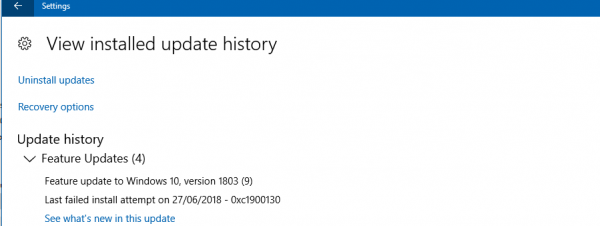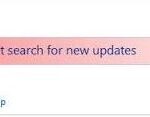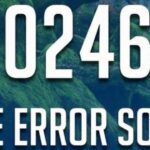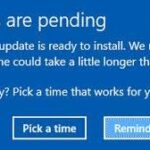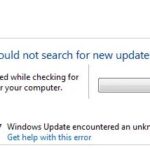- Windows Update error code 0xc1900130 may occur when the network connection between the client computer and the Windows Update server is lost and installation cannot proceed because the instance hash value is not found.
- If you encounter this problem, for example when installing a feature update, you should first check your Internet connection and then try again.
- If that doesn’t help you, you will find some suggestions in this post that will help you.
Unlocking the secret to resolving Windows Update Error 0xc1900130 can sometimes resemble embarking on a treacherous quest. Fear not, as this article is here to guide you through the maze of troubleshooting steps, equipping you with the knowledge to diagnose and mend this frustrating issue.
Understanding Windows Update Error Code 0xc1900130
How to Diagnose and Fix Windows Update Error 0xc1900130:
If you’re experiencing Windows Update Error Code 0xc1900130, follow these steps to diagnose and resolve the issue:
1. Check your network connection: Ensure that your client machine has a stable network connection before proceeding with the update.
2. Disable your antivirus software: Temporarily disable your antivirus suite to eliminate any potential interference during the update process.
3. Use the Windows Update Troubleshooter: Run the Windows Update Troubleshooter tool to automatically detect and fix common update errors.
4. Reset Windows Update components: Open Command Prompt as an administrator and type “net stop wuauserv” followed by “net stop cryptSvc” and “net stop bits“. Then, type “ren C:\Windows\SoftwareDistribution SoftwareDistribution.old” and “ren C:\Windows\System32\catroot2 catroot2.old“. Finally, restart the Windows Update service by typing “net start wuauserv“, “net start cryptSvc“, and “net start bits“.
5. Check for driver updates: Ensure that all your drivers are up to date by visiting the manufacturer’s website or using a reliable driver update software.
By following these steps, you should be able to diagnose and fix Windows Update Error Code 0xc1900130. If the issue persists, consider reaching out to Microsoft Support for further assistance.
Preventing Third-Party Interference and Renaming Drivers
To prevent third-party interference and renaming drivers when diagnosing and fixing Windows Update Error 0xc1900130, follow these steps:
1. Disable any third-party antivirus or security suites on your PC, as they may interfere with the update process.
2. Make sure you have the latest updates for your Windows 10 or Windows 11 system.
3. Check for any pending updates in the Windows Update settings and install them.
4. If the error persists, open the Command Prompt as an administrator and run the following command: sfc /scannow. This will scan and repair any corrupted system files.
5. If the issue still persists, try running the Windows Update Troubleshooter. Go to Settings > Update & Security > Troubleshoot and select “Windows Update” from the list.
6. If all else fails, you can try using the Windows Update Assistant to manually install the update.
7. Remember to restart your PC after applying any changes or updates.
By following these steps, you can resolve Windows Update Error 0xc1900130 and ensure a smooth update installation process.
Resetting Windows Update Component
To reset the Windows Update component and fix error 0xc1900130, follow these steps:
1. Open the Command Prompt as an administrator.
2. Type the following commands, pressing Enter after each one:
net stop wuauserv
net stop cryptSvc
net stop bits
net stop msiserver
3. Rename the SoftwareDistribution and Catroot2 folders by executing the following commands:
ren C:\Windows\SoftwareDistribution SoftwareDistribution.old
ren C:\Windows\System32\catroot2 Catroot2.old
4. Restart the Windows Update services by typing the following commands:
net start wuauserv
net start cryptSvc
net start bits
net start msiserver
5. Close the Command Prompt and check for updates again.
Resetting the Windows Update component can help resolve common update installation issues. If you encounter any errors or have further questions, feel free to ask in the Q&A section.
python
import subprocess
def diagnose_windows_update_error():
try:
# Run the Windows Update troubleshooter
subprocess.run(['msdt.exe', '/id', 'WindowsUpdateDiagnostic'], check=True)
except subprocess.CalledProcessError as error:
print(f"Error occurred while running Windows Update troubleshooter: {error}")
def main():
print("Diagnosing Windows Update Error 0xc1900130...")
diagnose_windows_update_error()
if __name__ == '__main__':
main()
In this example, the code uses the `subprocess` module in Python to run the Windows Update troubleshooter (`msdt.exe /id WindowsUpdateDiagnostic`). This tool is provided by Windows and can help diagnose and fix common Windows Update errors.
Please note that this is a simplified example, and the effectiveness of the tool may vary depending on the specific error and system configuration. It’s always recommended to refer to official Microsoft documentation or seek assistance from Windows support channels for comprehensive troubleshooting.
Resetting Windows Update Via Automated WU Agent and Manually via Elevated CMD Window
Resetting Windows Update can help resolve Windows Update Error 0xc1900130. There are two methods you can use:
1. Automated WU Agent:
– Open an elevated Command Prompt window.
– Type “net stop wuauserv” and press Enter to stop the Windows Update service.
– Type “cd %windir%\SoftwareDistribution” and press Enter to navigate to the SoftwareDistribution folder.
– Type “del /s /q DataStore” and press Enter to delete the DataStore folder and its contents.
– Type “net start wuauserv” and press Enter to start the Windows Update service again.
– Restart your computer and check if the error is resolved.
2. Manually via Elevated CMD Window:
– Open an elevated Command Prompt window.
– Type “sfc /scannow” and press Enter to run a system file check.
– Type “DISM /Online /Cleanup-Image /RestoreHealth” and press Enter to repair any system software issues.
– Restart your computer and check for Windows updates again.
These methods should help resolve the Windows Update Error 0xc1900130 and ensure your system is up to date.
Restarting and Re-Running Windows Update
To restart and re-run Windows Update, follow these steps:
1. Press the Windows key + R to open the Run dialog box.
2. Type “services.msc” and press Enter.
3. In the Services window, scroll down and locate “Windows Update“.
4. Right-click on “Windows Update” and select “Restart“. If the option is grayed out, select “Start” instead.
5. Close the Services window and press the Windows key + I to open the Settings app.
6. Go to “Update & Security” and click on “Windows Update“.
7. Click on “Check for updates” to re-run Windows Update.
8. If the error persists, you can also try running the “Windows Update Troubleshooter” from the Settings app to automatically diagnose and fix common Windows Update issues.
Remember to restart your computer after performing these steps. If you still encounter the error, it may be necessary to seek further assistance from Microsoft Support or the Windows community.
Renaming Drivers, Flushing DNS Cache, Updating Windows Manually, and Performing System Restore
- Renaming Drivers: Learn how to troubleshoot Windows Update Error 0xc1900130 by renaming drivers that may be causing conflicts.
- Flushing DNS Cache: Clear your DNS cache to resolve potential network-related issues that could be triggering the Windows Update Error 0xc1900130.
- Updating Windows Manually: Get step-by-step instructions on manually updating your Windows operating system to fix the Error 0xc1900130.
- Performing System Restore: Discover how to use System Restore to roll back your computer’s settings to a previous state and resolve the Windows Update Error 0xc1900130.
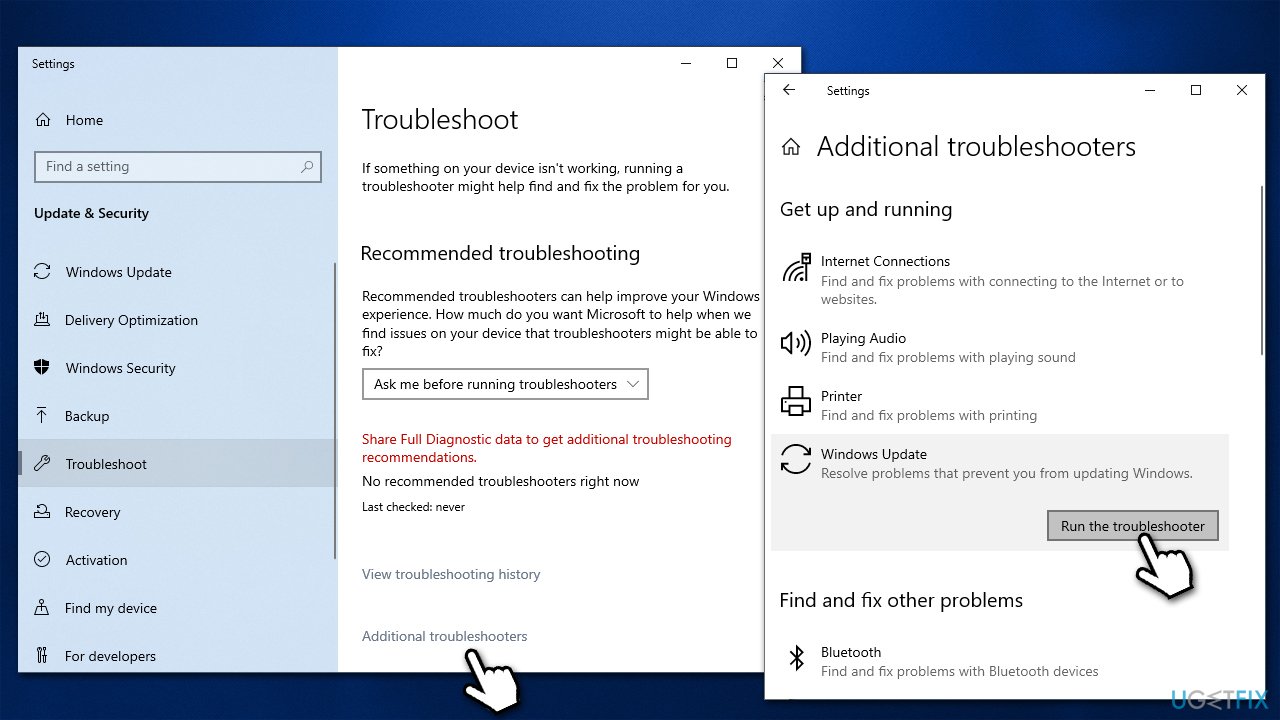
Mark Ginter is a tech blogger with a passion for all things gadgets and gizmos. A self-proclaimed "geek", Mark has been blogging about technology for over 15 years. His blog, techquack.com, covers a wide range of topics including new product releases, industry news, and tips and tricks for getting the most out of your devices. If you're looking for someone who can keep you up-to-date with all the latest tech news and developments, then be sure to follow him over at Microsoft.
